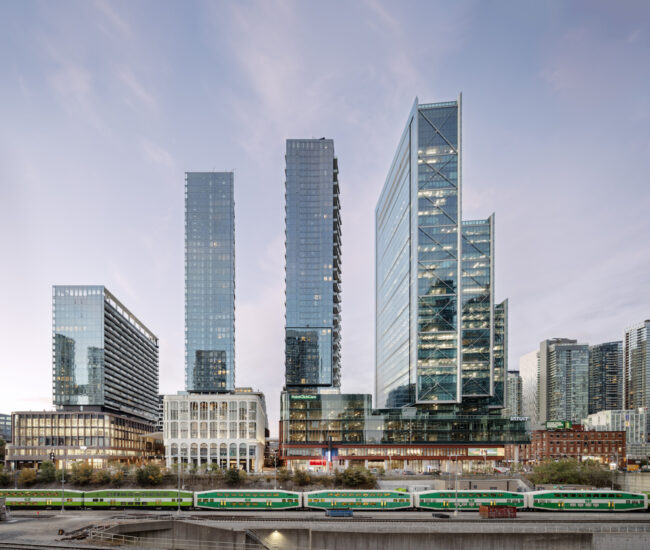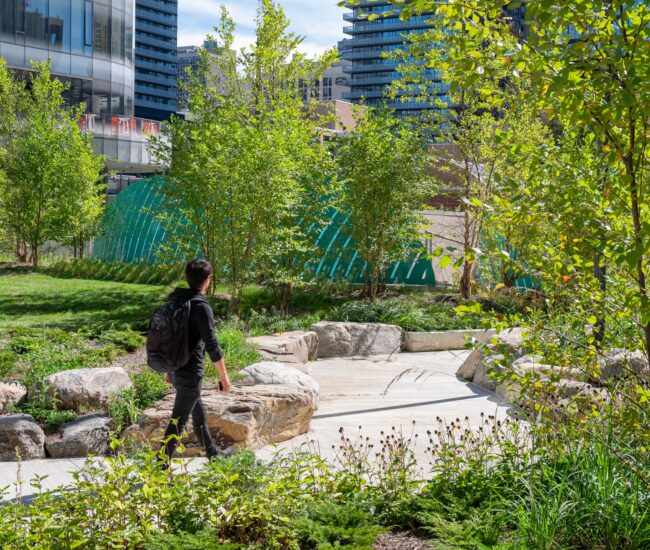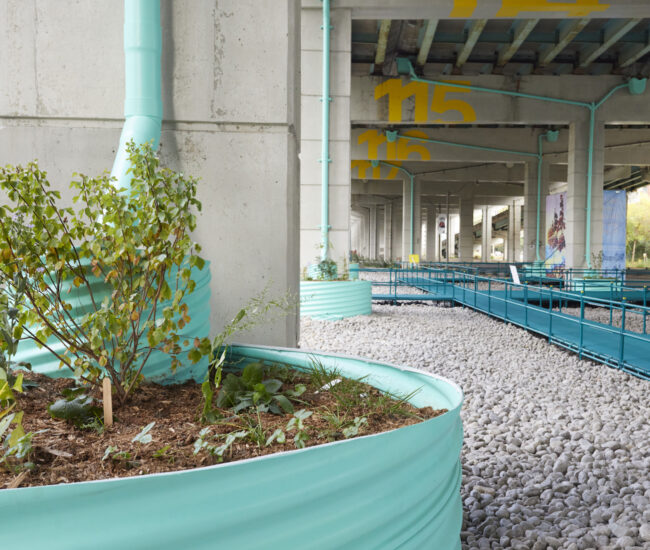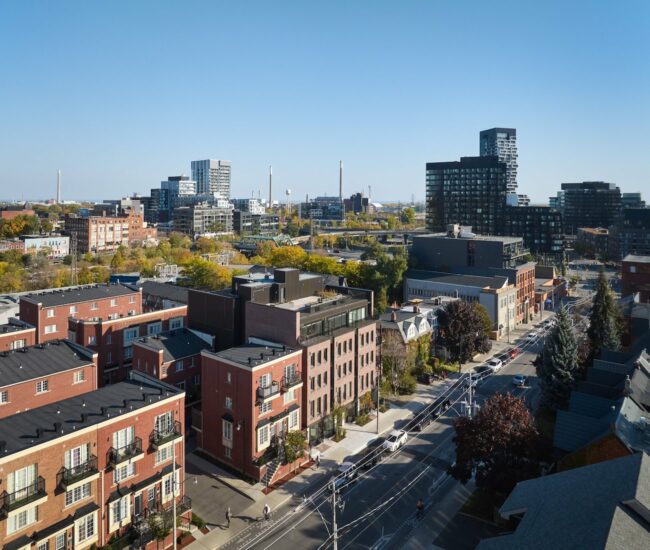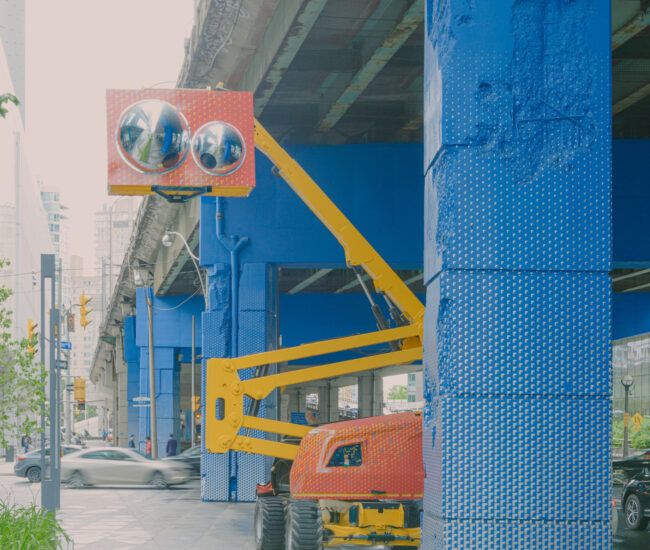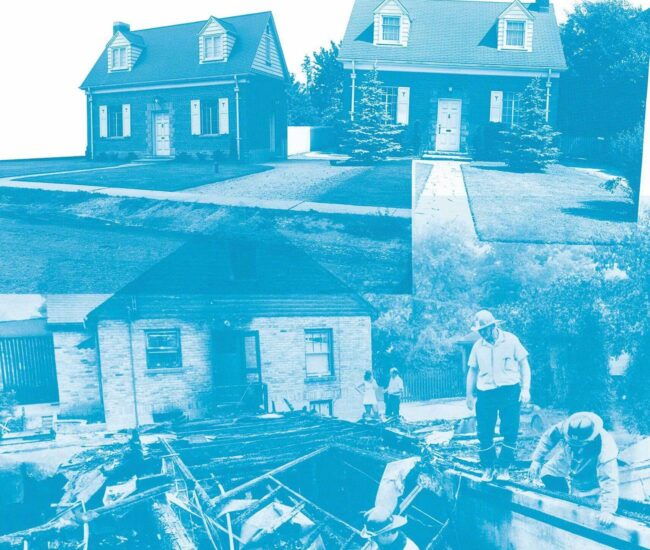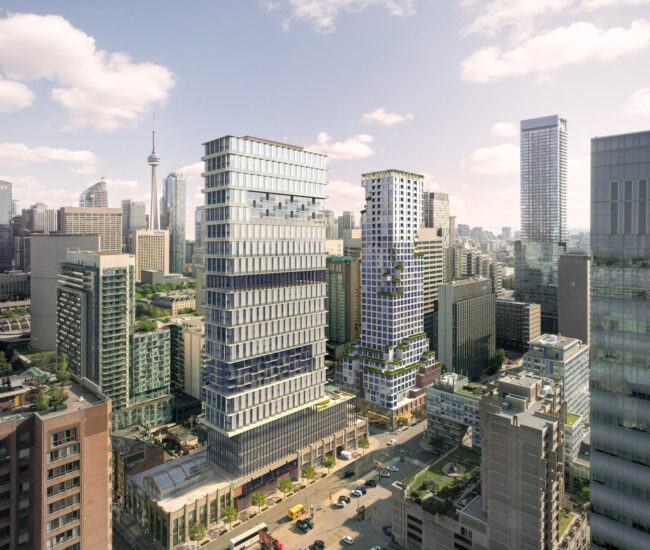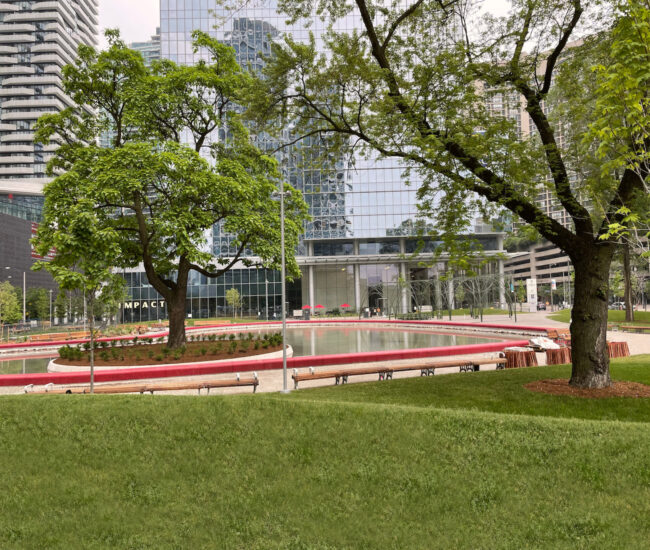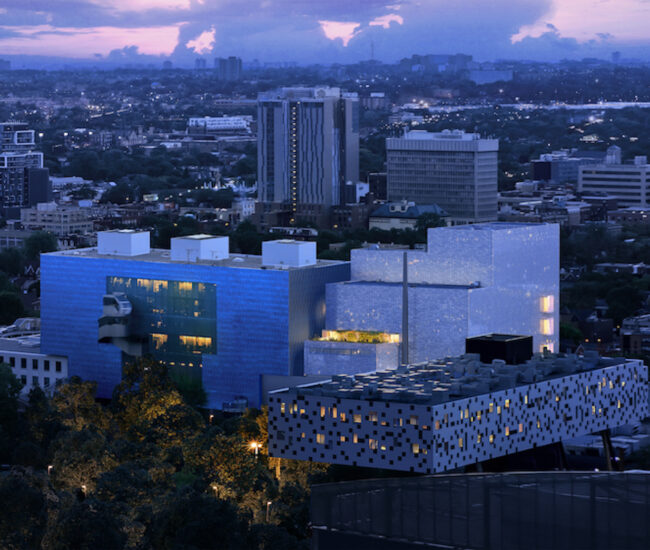The City Beat: Unveiling Mirvish’s New Facade
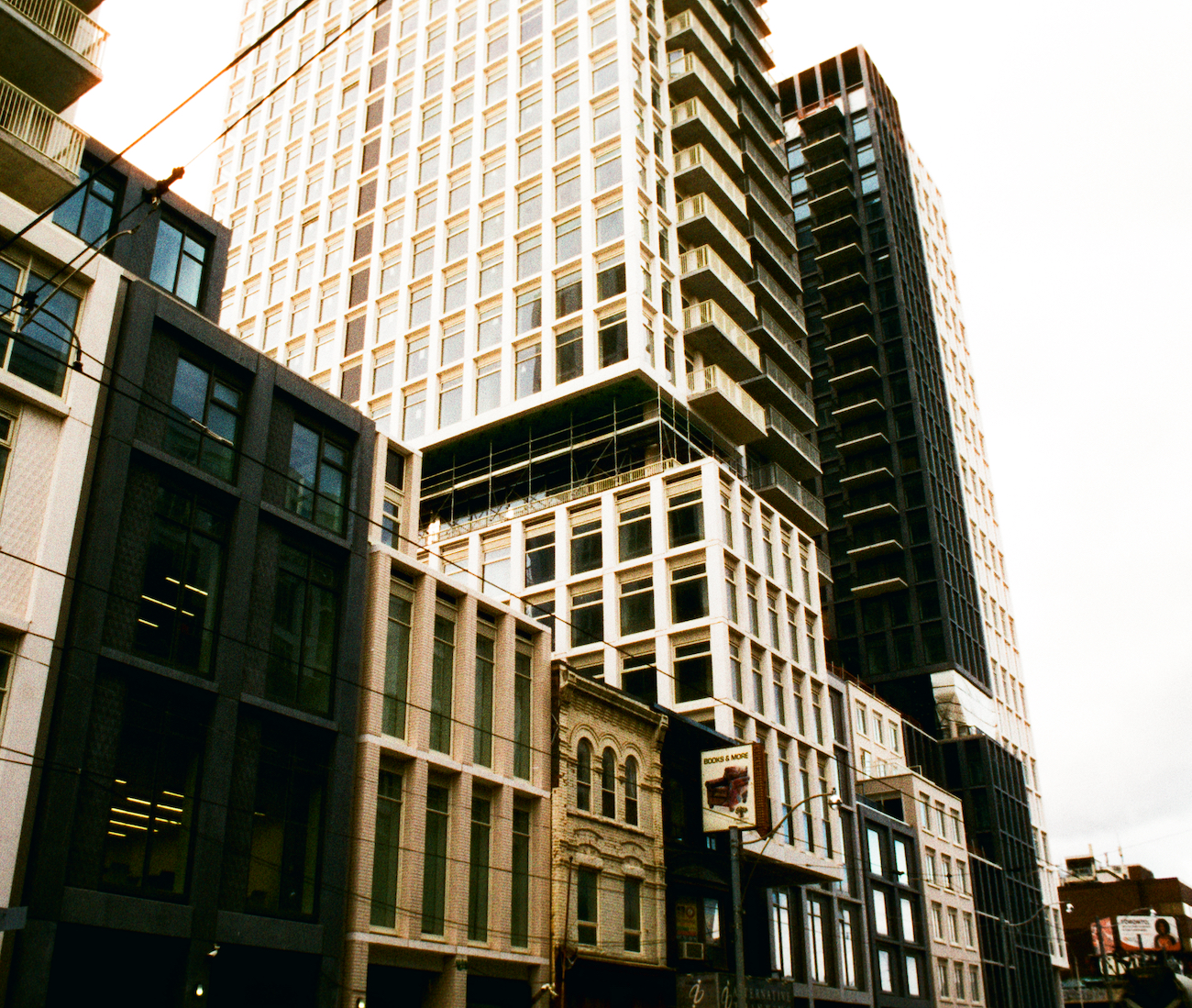
The city’s tackiest historic landmark has been replaced by something sophisticated and new. How should we feel about that?
When I was a kid, somebody told me that Honest Ed’s, the beloved discount shop at Bathurst and Bloor, was visible from outer space. I believed this statement wholeheartedly. The place was so outlandish, with its whorls of coloured lights and labyrinthine interiors, that I might’ve believed anything about it.

I loved it, not only for its blingy, Vegas Strip charm, but also for what it represented. Its proprietor, Ed Mirvish, the son of a Kyiv shopkeeper, understood that salesmanship is indistinguishable from showmanship. He promoted store events by bringing in trombone-playing clowns or painting an elephant pink. With his mix of chutzpah and hucksterism, he embodied a mid-century, Jewish-immigrant sensibility. I came from people just like him.
In 2013, his son, David, an art collector with patrician tastes, sold the business along with Mirvish Village — a district of cafes and galleries that Ed Mirvish developed at the behest of his artist wife, Anne — to the luxury developer Westbank Corp., which opted to demolish the building and create something new. Everybody involved in the project promised to honour its history. The architect of record, Toronto firm Diamond Schmitt, proclaimed that the new complex “will carry on the legacy of the neighbourhood.”

Today, despite cost overruns and some messy legal disputes, construction is nearing completion, which means you can visit the site and see for yourself that it doesn’t achieve this goal. It doesn’t really try. But that hardly makes it a failure. One can’t judge the new Mirvish Village by comparing it to the old one.
Few people on Earth are as grandiose as the folks who write marketing copy for property developers. The website for Mirvish 2.0 describes it as “the most important experiment in community-building in Toronto’s history,” a project unlike any you’ve ever seen. In reality, it’s an apartment complex with retail amenities on the ground level – a sight as familiar in this city as raccoons, pigeons, and gridlock on the DVP.

Still, as Toronto apartment complexes go, it’s among the best. Instead of the tower-and-podium monoliths we’re all so used to, the new Mirvish Village is an agglomeration of 33 buildings, which vary in size and form. The colourful facades, with their panels of precast concrete and brick, seem to gesture, albeit vaguely, to the industrial warehouses of the old city. Gregory Henriquez, founder of Henriquez Partners, the design architects on the project, says he was inspired by Tokyo, a city where assorted buildings – short, mid-sized, and tall – “sit cheek by jowl,” creating a dynamic streetscape.

And while most property developers proclaim that they’re creating spaces of synergy and dynamism, Westbank is at least trying to deliver on this promise. The lower-level spaces, we’re told, will have artisanal shops, art galleries, and a music venue. There’s even a mural by Frank Stella, one of David Mirvish’s favourite artists.
The most important amenity at the new Mirvish Village will be the dwellings themselves – roughly 900, all available for rent and nearly half at below 30 percent of the median household income. Even these “affordable” units will be unattainable to many Torontonians: the new Mirvish Village is unlikely to make the surrounding Annex neighbourhood much less class segregated than it already is. But, in a housing crisis, an increase in supply is always a welcome change. There’s extensive research showing that, in densely populated cities, an influx of new apartments will exert downward pressure on prices overall.

To nostalgic Torontonians, the new Mirvish Village will nevertheless feel like a letdown. A suite of high rises now sits in the spot once occupied by the city’s quirkiest landmark. Again, our collective heritage has lost out to the diktats of the housing market. This critique isn’t new. One hears a version of it every time somebody proposes a medium-rise development in a leafy Victorian community and NIMBYs start howling about the threat to neighbourhood character.
The NIMBYs aren’t wrong, but neither do they have their priorities straight. History matters, but present-day people matter more. In Toronto, few needs are more critical today than the need for many more homes. I miss the old Mirvish Village. As for the new one: I can’t get as excited as the marketers who hype it up, but I still think it’s a win for the city.

